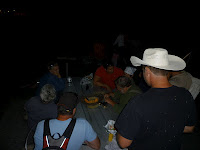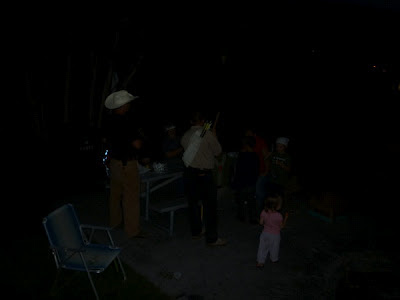I personally think that a 72 hour kit can be a deadly thing if used the wrong way. Let me explain; if you do not understand how to use your 72 hour kit you can be lulled into a false sense of security. The mere fact that you have a 72 hour kit does not mean that you are safe or that you will survive a natural disaster. It merely means that you have enough sense to think ahead and plan for the worst hoping that you will not need to use it. Let me ask have you ever tried to live off of just your 72 hour kit for 72 hours? Of course not! First off it is expensive, secondly who has time to do such a thing? So instead, we buy a kit from someone else and trust that they know what we like to eat, what our individual needs are. They also assume that we will all be living in the same climate and environment. Well that is a lot of assuming. So why do we have a 72 hour kit? What should I put in my 72 hour kit? How often should I go through my 72 hour kit? Lets talk about each one of these questions and see if we can come up with some good answers.
 Okay so on to question 1: So why do we have a 72 hour kit? A lot of people have a 72 hour kit because that is what they have heard the government say we should have. Some people have a 72 hour kit because their religious leaders advise them to have one, and others have one because it just sounds like good sound advice to have one. Well good for all of us that want to be prepared and have a plan. Now here is something to think about; it takes a minimum of 72 hours just to activate a federal entity. That does not even take into account the time that it will take them to reach you. So in reality if you want a kit that will keep you alive until help arrives you will need enough supplies for 3 weeks at least.
Okay so on to question 1: So why do we have a 72 hour kit? A lot of people have a 72 hour kit because that is what they have heard the government say we should have. Some people have a 72 hour kit because their religious leaders advise them to have one, and others have one because it just sounds like good sound advice to have one. Well good for all of us that want to be prepared and have a plan. Now here is something to think about; it takes a minimum of 72 hours just to activate a federal entity. That does not even take into account the time that it will take them to reach you. So in reality if you want a kit that will keep you alive until help arrives you will need enough supplies for 3 weeks at least. Question 2: What should I put in my 72 hour kit? The answer to this question is as different as their are people. However there are 6 categories that you should always consider at a minimum when packing for any outdoor adventure / disaster. They are Water, Fire, Shelter, Food, First Aid, and The Will to Live. Now in every situation you will have to prioritize these categories, because their importance will very with the conditions that you are in. Another thing to think about is the climate that you live in and the time of year. This will have a large impact on the type of clothing you pack.
 Water: A commercial water purifier for backpacking will work great, as long as the water source you are using is not contaminated with oil, fuel, or antifreeze.
Water: A commercial water purifier for backpacking will work great, as long as the water source you are using is not contaminated with oil, fuel, or antifreeze.
Fire: A Fulsome Rod will work great even in wet conditions. These rods are also called "Hot Sparks", "Permanent Match", or have been mistaken for Flint and Steel.
Shelter: A tent that will fit you and your family, or a tarp. You can make several different types of shelters with a simple tarp and it can be much litter then a tent.
Food: This is where you have to really get creative. If you go out and buy frees dried meals that you are not femilyour with then when it comes time to eat them you might not like them. you also might not know how to prepare them. So the simple rule is "Store what you eat and eat what you store." This way you are fimilyour with it and it won't feel like an inconvenience when you have to depend on it.
First Aid: A good first aid kit will cost you some money. However this is something that you do not want to skimp on. Find one that will accommodate 8-15 people and is meant for trauma not just cuts and scrapes. This way you will have enough to treat everyone in the family and it will have more then just band-aids and neosporin.
The Will to Live: This is a state of mind more then anything. It is a mental toughness that prepares you to be able to live at all cost. It prepares you for the worst and allows you to do your best.
Here is a Shameless Plug You can find all of this on our web site at http://www.wildjakes.com/wj/Store.aspx
Question 3: How often should I go through my 72 hour kit? If you are rotating your food by living off what you are storing then you are doing the right thing. If you also go through your kit when the seasons change then you are doing the right thing. This will allow you to prep your clothes for each season and check expiration dates on the other things in your kit. It will also keep you familiar with what you have and where it is in your kit.
This brings me to the last two things that I want to cover. The first is that there is a big difference between a go bag and a kit. Your go bag will need to meet these same principles but on a much smaller scale. It should be a bag that you have with you at all times. By this I mean that you should get in the habit of putting it in your car when you leave the house, and taking it indoors again with you. This way when you need it you will have it. Your kit however will be much larger and you will need to have some time to move it. Be careful where you store it, i.e. if you are in a flood zone then the basement is probably not the best place to keep it. The second thing that I want to talk about is knowledge, spicificly primitive survival skills. The more you know about this the better prepared you will be. You will learn how to live so that you can use the land and your enviorment to your advantage. This will give you the confidence that you need to Survive in any situation.
You can sign up for these types of experiences at www.wildjakes.com. We teach Primitive Survival Skills through Experiential Education.














































